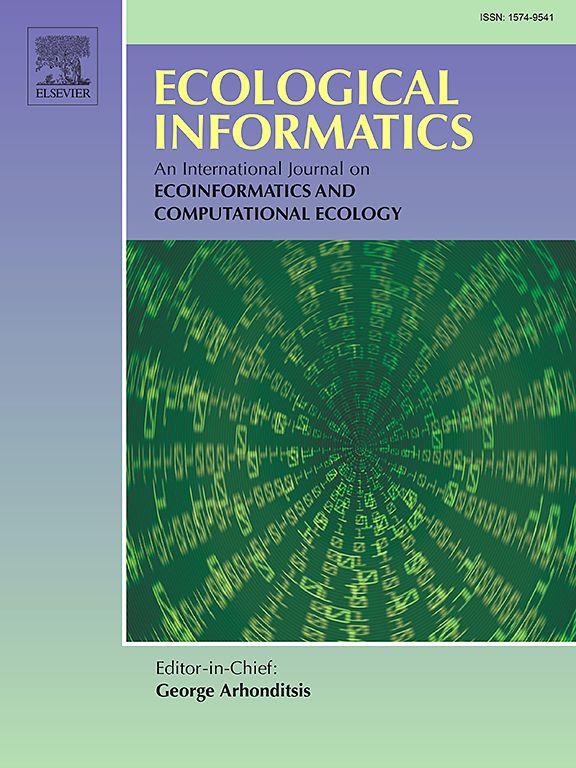Mapping hotspots and unveiling drivers of mortality in the endangered Gangetic Dolphin (Platanista gangetica) to mitigate human-mediated conservation conflicts in the Ganga River Basin, India
IF 5.8
2区 环境科学与生态学
Q1 ECOLOGY
引用次数: 0
Abstract
Globally, effective conservation of threatened species hinges on robust population monitoring and the identification and minimization of threats that influence population dynamics. In the recent years, human-induced factors have surpassed natural causes as the primary drivers of species decline. Hence, information on human-induced threats of mortality and identifying spatial hotspots are critical for implementing timely and targeted conservation interventions. The Gangetic dolphin (Platanista gangetica) is widely recognized as a flagship species of river ecosystems in the Ganga River Basin, which has suffered population decline due to human-induced threats, including negative human-dolphin interactions. In the present study, we used a combination of a maximum entropy model (MaxEnt) and GIS-based weighted overlay analysis (WOA) to identify Gangetic dolphin mortality hotspots in the Ganga Basin. We compiled 110 records of Gangetic dolphin mortalities (n = 76) and rescues (n = 34) from diverse sources, including media reports, scientific articles, community volunteer network called the Ganga Praharis and basin-wide ecological surveys. The highest number of mortalities was recorded along the Hooghly River (38.2 %), followed by the Ganga mainstem (34.2 %), Sharda canal (9.2 %) and Girwa-Kauriyala rivers (7.5 %). The primary cause of mortality was accidental, such as entanglement in fishing nets, boat collision, dredging of river channels (32.9 %), followed by stranding in canal/barrages/shallow water (14.5 %), consumptive poaching (10.5 %), retaliatory killing (5.3 %), and natural causes (3.9 %). Using a combination of MaxEnt and WOA, we identified 770 km (15.1 %) of the river stretches as mortality hotspots associated with human-induced factors in the Basin. These identified stretches require urgent conservation interventions, such as the establishment of rescue and rehabilitation facilities, improved veterinary response system, and engagement with riverside communities to reduce the human-induced threats to Gangetic dolphin.
绘制濒危恒河豚(Platanista gangetica)的热点并揭示其死亡原因,以减轻印度恒河流域人为引起的保护冲突
在全球范围内,有效保护受威胁物种取决于强有力的种群监测以及识别和尽量减少影响种群动态的威胁。近年来,人为因素已超过自然因素,成为物种减少的主要驱动因素。因此,关于人类造成的死亡威胁的信息和确定空间热点对于实施及时和有针对性的保护干预措施至关重要。恒河豚(Platanista gangetica)被广泛认为是恒河流域河流生态系统的旗舰物种,由于人类引起的威胁,包括人类与海豚的负面互动,恒河流域的种群数量下降。本研究采用最大熵模型(MaxEnt)和基于gis的加权叠加分析(WOA)相结合的方法对恒河流域恒河豚死亡热点地区进行了识别。我们收集了110份恒河豚死亡记录(76份)和救援记录(34份),这些记录来自不同的来源,包括媒体报道、科学文章、被称为恒河Praharis的社区志愿者网络和全流域生态调查。胡格利河沿岸的死亡率最高(38.2%),其次是恒河干流(34.2%)、沙尔达运河(9.2%)和Girwa-Kauriyala河(7.5%)。主要死亡原因为意外事故,如渔网缠绕、船只碰撞、河道疏浚(32.9%),其次为运河/河坝/浅水搁浅(14.5%)、消费偷猎(10.5%)、报复性杀害(5.3%)和自然原因(3.9%)。利用MaxEnt和WOA的组合,我们确定了770公里(15.1%)的河流延伸是与流域人为因素相关的死亡热点。这些已确定的河段需要紧急的保护措施,如建立救援和康复设施,改善兽医反应系统,并与河边社区合作,以减少人类对恒河豚的威胁。
本文章由计算机程序翻译,如有差异,请以英文原文为准。
求助全文
约1分钟内获得全文
求助全文
来源期刊

Ecological Informatics
环境科学-生态学
CiteScore
8.30
自引率
11.80%
发文量
346
审稿时长
46 days
期刊介绍:
The journal Ecological Informatics is devoted to the publication of high quality, peer-reviewed articles on all aspects of computational ecology, data science and biogeography. The scope of the journal takes into account the data-intensive nature of ecology, the growing capacity of information technology to access, harness and leverage complex data as well as the critical need for informing sustainable management in view of global environmental and climate change.
The nature of the journal is interdisciplinary at the crossover between ecology and informatics. It focuses on novel concepts and techniques for image- and genome-based monitoring and interpretation, sensor- and multimedia-based data acquisition, internet-based data archiving and sharing, data assimilation, modelling and prediction of ecological data.
 求助内容:
求助内容: 应助结果提醒方式:
应助结果提醒方式:


